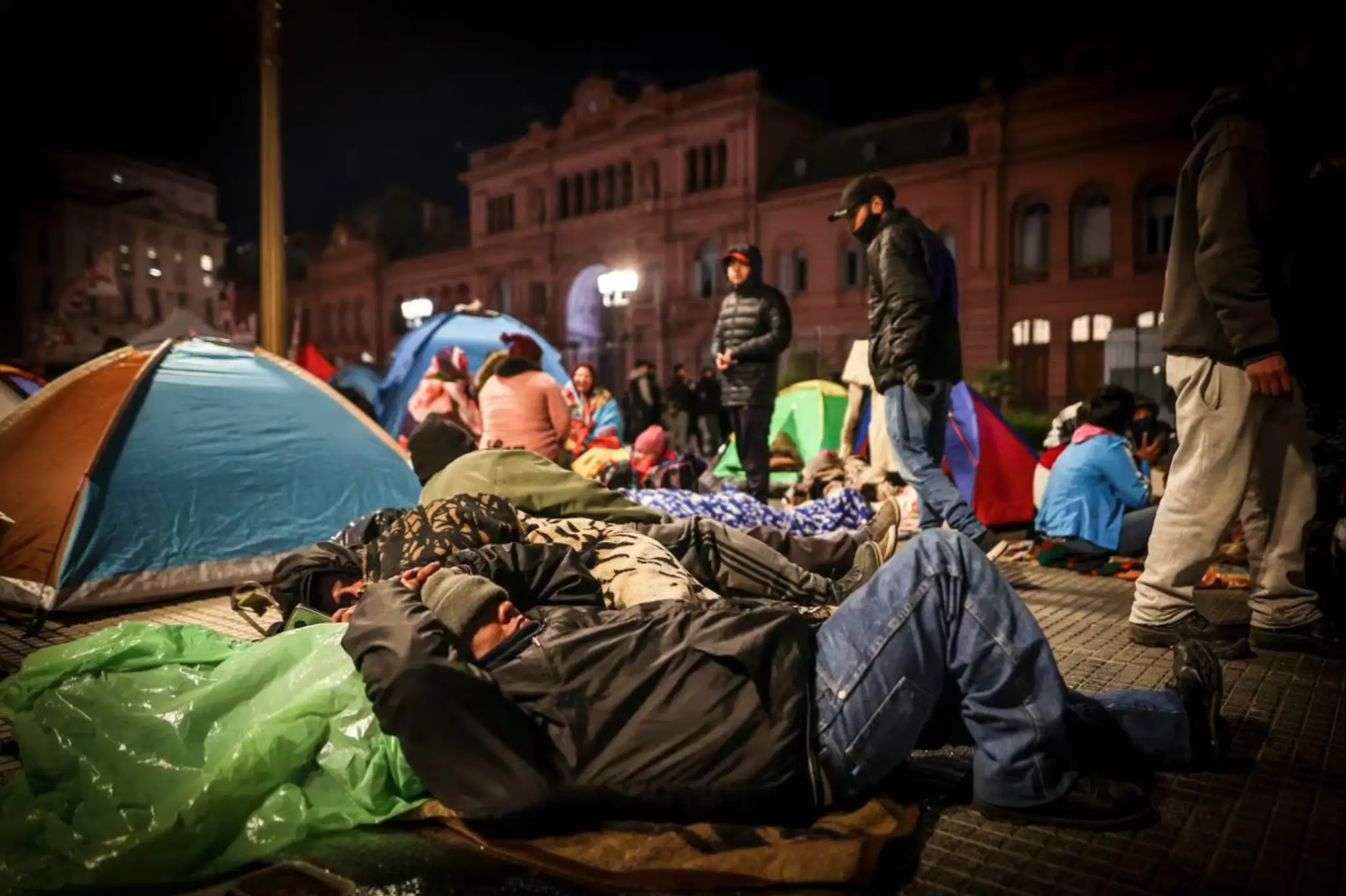The hyperinflation that is overwhelming Argentina does not allow contracts, investments, purchases, sale transactions, or loans to be carried out over time. In a capitalist system, however, it is an essential condition to be able to carry out operations of this nature in the medium or long term. And, if this does not happen, economies and governments often collapse.
By macroeconomic convention, a nation is in a high inflation regime when prices reach or exceed three digits in an average term of one year, and in a hyperinflationary process when prices increase by more than 50% in one month.
According to Johns Hopkins University professor Steve Hanke, when hyperinflation appears in a country, some phenomena begin to manifest, which are already visible in Argentina. Businesses begin to change the prices of goods and services every week and even every day; the population begins to spend their salaries as quickly as possible on consumer durables (even if they do not need them) so as not to lose purchasing power, and the value of goods and services is usually calculated in a stable foreign currency, instead of in the local one. In turn, savings tend to be kept in a foreign currency and transactions start to be made in a foreign currency as well.
In 2016, the Latin American country closest to hyperinflation and that could pass the 50% monthly barrier on a permanent basis, according to Professor Hanke, was Venezuela. By that time, the country already had inflation of 255% per year and the succession of lousy measures taken by the regime of Nicolás Maduro led to a rise that continued to yield inflation of 438% in 2017, 65,374% in 2018, and 19,906% in 2019.
The pandemic impact
On a global scale, in 2020, central banks were forced to issue large sums of money to finance public spending, which had increased due to the COVID-19 pandemic in an environment of enormous paralysis of economic activity.
By March 2021, the economies of the most developed countries were experiencing inflationary processes after almost three decades of stability. These processes were aggravated by Russia’s offensive war against Ukraine, due to the fact that both countries are suppliers of food and energy, and the supply of these goods was considerably restricted.
In 2022, in Latin America, the consumer price index (CPI) determined interannual inflation of 305% in Venezuela, 94.8% in Argentina, 13.1% in Colombia, 12.8% in Chile, 8.1% in Uruguay, 7.8% in Mexico, 5.7% in Brazil and 3.1% in Bolivia. Meanwhile, in countries of other latitudes, year-on-year inflation was 11.6% in Italy, 10.7% in Great Britain, 9.6% in Germany, 6.5% in the United States, and 5.7% in Spain. The CPI in the same period, but in countries that were in conflict, showed inflation of 55% in Syria, 35% in Ethiopia, and 26% in Ukraine.
The Argentine reality
Of all countries in the world, Argentina, currently with an inflation rate of 102.5%, has earned fourth place in the ranking of countries with the highest inflation.
At the same time, since 2022 Argentina’s monthly inflation has maintained an upward trend. And according to the National Institute of Statistics and Censuses (Indec), which released the CPI, in January 2022 there was an inflation of 3.9%; in February, 4.7%, and thereafter it hovered between 5% and 7% month by month. Already in 2023, the rate reached 6% in January and 6.6% in February. Now it is estimated, based on the measurements of numerous private consulting firms, that the monthly increase for March will reach or exceed 7%.
Why does this figure generate an alarm in Argentina? Because when in July 2022 it reached 7.4%, the then Minister of Economy, Silvina Batakis, who held the office for less than a month, was forced to resign and pass the baton to Sergio Massa (one of the founders of the ruling party Frente de Todos), who has close ties with the national and international establishment. The objective was to try to stop the run against the peso and avoid possible hyperinflation.
Currently, despite Massa and his “crony capitalism“, it is expected that the inflation figure, to be communicated soon by Indec, will be equivalent to the one that in the past led to fears of the beginning of a hyperinflationary spiral.
In the midst of this context, international media such as the Financial Times have started to publish headlines such as the following: “Hyperinflation Argentina is ready to bloom”. For its part, BTG Pactual, the Brazilian investment bank, has headlined in a report: “Argentina’s topic of the day: dancing on the Titanic”.
Likewise, these inflation indicators are, to a large extent, sources of worrying and growing poverty in Argentina. According to Indec, and based on measurements taken for the second half of 2022, 39.2% of Argentines are already poor.
*Translated from Spanish by Janaína Ruviaro da Silva











